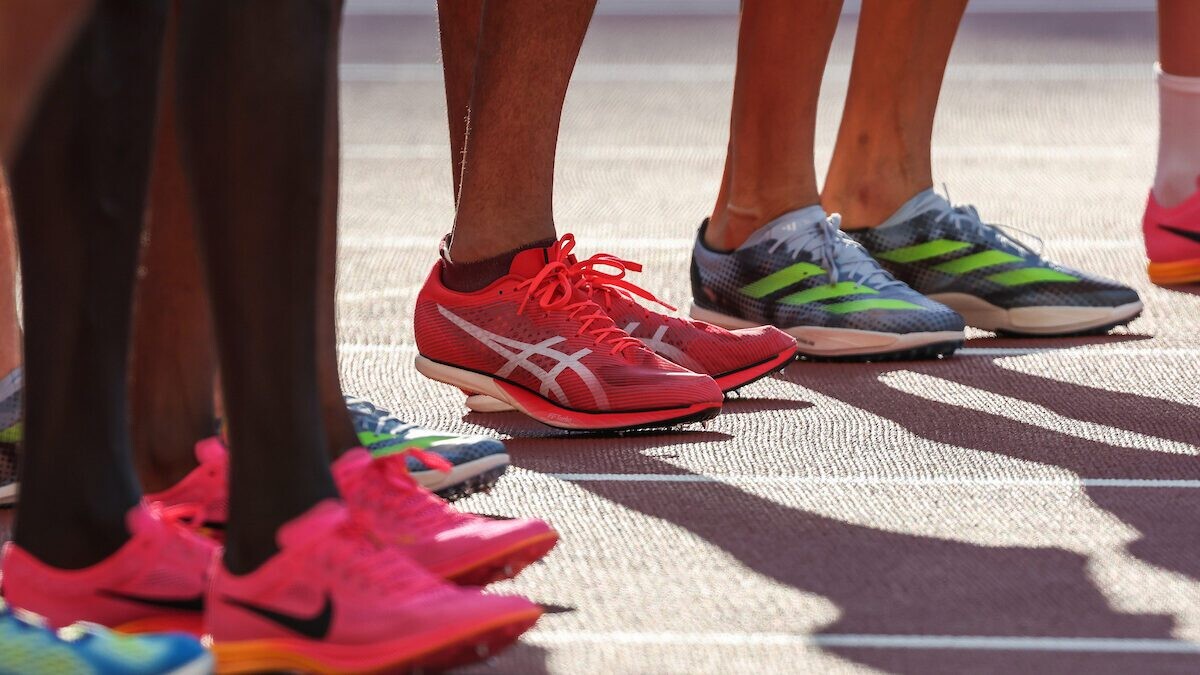Running News Daily
Running News Daily is edited by Bob Anderson. Send your news items to bob@mybestruns.com Advertising opportunities available. Train the Kenyan Way at KATA Kenya and Portugal owned and operated by Bob Anderson. Be sure to catch our movie A Long Run the movie KATA Running Camps and KATA Potato Farms - 31 now open in Kenya! https://kata.ke/
Index to Daily Posts · Sign Up For Updates · Run The World Feed
NCAA introduces new rules for racing shoes
No more Vaporflys: The new rule will bring NCAA competition in line with World Athletics' limit of 25 mm for indoor and outdoor track competitions.
On Aug. 8, as the world’s attention was focused on the final days of athletics at the 2024 Paris Olympics, the NCAA Rules Panel made a big decision regarding the shoes athletes can wear in competition. The governing body of U.S. collegiate sports announced that starting in the 2024/2025 season, it will align its regulations with World Athletics’ rules for cross country, indoor and outdoor track competitions.

This change comes after some scrutiny during the 2024 season, when University of Florida runner Parker Valby wore customized carbon-plated Vaporfly Next% 3 track spikes in the women’s 10,000m at the 2024 NCAA Championships, giving her a significant advantage over some of her competitors. Under World Athletics rules at the time, these shoes would have been illegal, but the NCAA was not following WA guidelines at the time. Now, the NCAA’s decision to abide by WA rules ensures that performances by student-athletes will meet the eligibility requirements for world competitions, such as the Olympic Games or World Championships.
“The shoes became a topic of discussion two years ago, but we didn’t have enough information to move forward,” Jack Hoyt, committee chair and director of men’s and women’s track and field at Azusa Pacific University in Azusa, Calif., said in a press release. “We knew many college programs had already purchased these [high stack carbon-plated] shoes, and we didn’t think it was financially fair to implement the rule back then. Since then, there has been more communication from World Athletics about the shoes.”

The new rule will bring NCAA competition in line with World Athletics’ compliance, setting a maximum stack height of 25 mm for track events and 40 mm for road or cross-country competitions. World Athletics introduced these in-competition stack height rules in 2021 to ensure fairness, maintain the integrity of the sport and address the performance advantages provided by technological advancements in footwear.
Previously, NCAA athletes who wore shoes with a heel stack height exceeding the legal 25 mm risked having their times disqualified from in competitions outside the NCAA, complicating the issue across hundreds of meets during a condensed three-and-a-half-month season.
In addition to the shoe regulations, the NCAA Rules Panel also approved a modification to the rules on lane violations in men’s and women’s track and field and the use of pacing light technology at non-championship competitions. The new lane rule also aligns with World Athletics standards, stipulating that competitors will face disqualification for stepping on or over the lane line to their left with more than one step anywhere on a curve during a race.
by Marley Dickinson
Login to leave a comment




